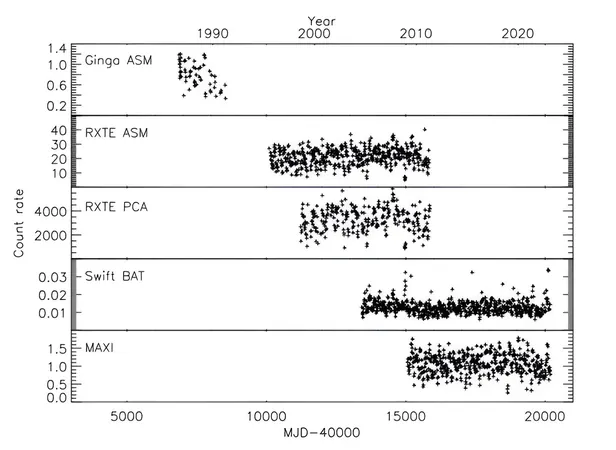
Groundbreaking Discovery: Unprecedented Changes in X-ray Binary 4U 1820-30 Raise New Questions About Stellar Behavior
2024-09-24
Groundbreaking Discovery: Unprecedented Changes in X-ray Binary 4U 1820-30 Raise New Questions About Stellar Behavior
A team of astronomers from the National Central University in Taiwan has made a fascinating discovery regarding the X-ray binary system 4U 1820-30, noted for its unusual superorbital period variations. Their findings, shared on September 13, 2023, could revolutionize our understanding of this intriguing system.
X-ray binaries consist of a regular star or a white dwarf that transfers mass onto a more compact object, such as a neutron star or a black hole. They are typically categorized into low-mass X-ray binaries (LMXBs) and high-mass X-ray binaries (HMXBs) depending on the mass of the companion star.
4U 1820-30 is classified as an ultra-compact LMXB and is located near the heart of the globular cluster NGC 6624. This distinctive system features a neutron star and a helium white dwarf, which has a mass between 0.06 and 0.08 solar masses. It completes an orbit approximately every 685 seconds, making it a subject of intense study.
In previous observations, 4U 1820-30 was found to demonstrate not only orbital and superhump variations but also an intriguing superorbital modulation with a period significantly longer than its orbital cycle. This modulation was stable, lasting about 171.03 days over several decades, providing a reliable framework for astronomers.
Now, a new study led by Yi Chou reveals unexpected changes in the superorbital period of 4U 1820-30. By examining extensive data collected from various telescopes since 1987, the researchers discovered a notable fluctuation in the superorbital period—from 171 days to 167 days—between 1987 and 2023. Intriguingly, this change seems to have occurred abruptly between late 2000 and early 2023 or may have shifted gradually, with a period derivative of approximately -0.000358 days per day.
Previously, scientists speculated that an undetected third companion star might be causing the superorbital period modulation in this system. However, Chou’s analysis challenges this notion, suggesting alternative explanations. The researchers propose that the instability in mass transfer induced by X-ray irradiation could be the source of this unexpected behavior. They noted, “The accretion stream is expected to flow from a small region around the L1 point on the companion, where the effective gravitational field is weak. Therefore, the accretion stream is highly sensitive to the X-ray irradiation onto this region.”
This revelation shines a light on the complex dynamics at play within X-ray binaries, indicating that more research and theoretical exploration are necessary to validate the idea of irradiation-induced mass transfer instability in 4U 1820-30.
Stay tuned for more updates as this story continues to unfold, highlighting the ever-evolving nature of our universe and the mysteries that lie within it!
 Brasil (PT)
Brasil (PT)
 Canada (EN)
Canada (EN)
 Chile (ES)
Chile (ES)
 España (ES)
España (ES)
 France (FR)
France (FR)
 Hong Kong (EN)
Hong Kong (EN)
 Italia (IT)
Italia (IT)
 日本 (JA)
日本 (JA)
 Magyarország (HU)
Magyarország (HU)
 Norge (NO)
Norge (NO)
 Polska (PL)
Polska (PL)
 Schweiz (DE)
Schweiz (DE)
 Singapore (EN)
Singapore (EN)
 Sverige (SV)
Sverige (SV)
 Suomi (FI)
Suomi (FI)
 Türkiye (TR)
Türkiye (TR)